Ditapis dengan
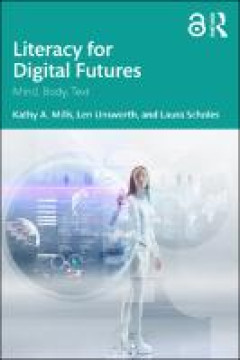
E-book Literacy for Digital Futures Proposal review
Contemporary art, entertainment, and architecture cultures offer a growing amount of digitally mediated spatial experiences, situated either in the metaverse (e.g. VR) or location-based in physical realms (e.g. AR), increasingly powered by generative systems (e.g. AI). Are such spatially “immersive experiences” a new phenomenon and dependent on digital innovation? The Art of Spatial Illusio…
- Edisi
- -
- ISBN/ISSN
- 9781000687040
- Deskripsi Fisik
- 274 hlmn
- Judul Seri
- -
- No. Panggil
- 371 MIL l
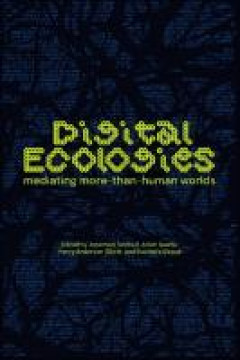
E-book Digital Ecologies
In an era of mass extinction, climate emergency, and biodiversity collapse, what role do digital media have in securing liveable futures? To what extent are digital media mitigating or intensifying environmental crises? And what theoretical, empirical, and methodological frameworks are needed to make sense of emerging digital ecologies? In a context where digital media are reshaping the futures…
- Edisi
- -
- ISBN/ISSN
- 9781526170354
- Deskripsi Fisik
- 296 hlmn
- Judul Seri
- -
- No. Panggil
- 302.231 TUM d

E-book Digital Entrepreneurship Impact on Business and Society
This open access book explores the global challenges and experiences related to digital entrepreneurial activities, using carefully selected examples from leading companies and economies that shape world business today and tomorrow. Digital entrepreneurship and the companies steering it have an enormous global impact; they promise to transform the business world and change the way we communicat…
- Edisi
- -
- ISBN/ISSN
- 978-3-030-53914-6
- Deskripsi Fisik
- 327 hlmn
- Judul Seri
- -
- No. Panggil
- 658.421 SOL d

E-book Critical Digital Art History Interface and Data Politics in the Post-…
Digital Art History has often aligned itself with the practical concerns of digital technology and the responsibilities of art institutions and associated institutional roles such as collection managers, information specialists, curators, and conservators. This emphasis on practicalities and implementation, while undeniably important, has often meant that there is little room for critical exami…
- Edisi
- -
- ISBN/ISSN
- 9781789389746
- Deskripsi Fisik
- -
- Judul Seri
- -
- No. Panggil
- 776 WAS c
E-book How Pharaohs Became Media Stars : Ancient Egypt and Popular Culture
Even today the academic world often rejects the different manifestations of contemporary popular culture as a source of study in many subjects of the humanities. In the fields of history and archaeology its role is, however, fundamental to the framework of research into cultural reception. In this respect, as defined by Sonna and Illarraga (2016: 9-10):Cines, series, películas, …
- Edisi
- -
- ISBN/ISSN
- 9781803276274
- Deskripsi Fisik
- 261 hlm
- Judul Seri
- -
- No. Panggil
- 776 PIC h
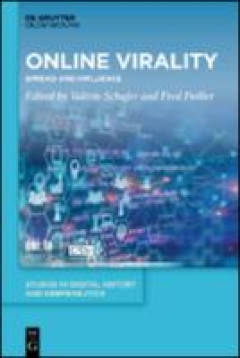
E-book Online Virality: Spread and Influence
This volume offers an interdisciplinary overview of online virality, exploring the circulation, reception, evolution of viral born-digital content. This phenomenon involves a combination of material, infrastructural, visual, and discursive elements, shaped by platforms, stakeholders, intermediaries, and communities. Regulation, curation, and content moderation are also critical. The book provid…
- Edisi
- -
- ISBN/ISSN
- 9783111311371
- Deskripsi Fisik
- 274 halaman, ilus.
- Judul Seri
- -
- No. Panggil
- 006.754 PAI o
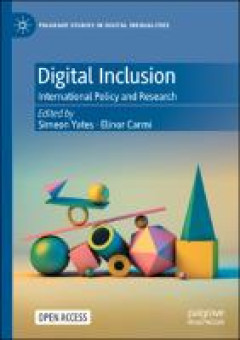
E-book Digital Inclusion: International Policy and Research
This collection presents policy and research that addresses digital inequalities, access, and skills, from multiple international perspectives. With a special focus on the impact of the COVID-19, the collection is based on the 2021 Digital Inclusion, Policy and Research Conference, with chapters from both academia and civic organizations. The COVID-19 pandemic has changed citizens’ relationsh…
- Edisi
- -
- ISBN/ISSN
- 9783031289309
- Deskripsi Fisik
- 286 halaman
- Judul Seri
- -
- No. Panggil
- 302.23 YAT d 002860-eB-0122
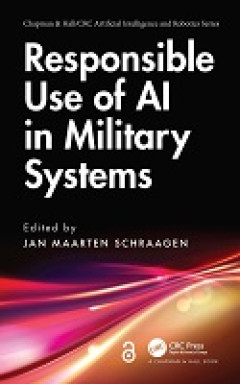
E-book Responsible Use of AI in Military Systems
Artificial Intelligence (AI) is widely used in society today. The (mis)use of biased data sets in machine learning applications is well?known, resulting in discrimination and exclusion of citizens. Another example is the use of non?transparent algorithms that can’t explain themselves to users, resulting in the AI not being trusted and therefore not being used when it might be beneficial to us…
- Edisi
- -
- ISBN/ISSN
- 9781032524306
- Deskripsi Fisik
- 387 halaman
- Judul Seri
- -
- No. Panggil
- 006.3 SCH r

E-Book The European Digital Economy: Drivers of Digital Transition and Econom…
The “digital economy” is a conceptual umbrella referring to markets, organizations and their networks that are based on digital technologies, communication, data processing and e-commerce. It is multidimensional and its dynamic structure must be analysed from various dimensions, such as economic – changes in the nature of resources, production factors and economic processes; technological…
- Edisi
- -
- ISBN/ISSN
- 9781032584584
- Deskripsi Fisik
- 245 halaman
- Judul Seri
- -
- No. Panggil
- 337 LUB t
E-book Global Strategy on Digital Health 2020-2025
In 2005 the World Health Assembly through its resolution WHA58.28 on eHealth urged Member States “to consider drawing up a long-term strategic plan for developing and implementing eHealth services… to develop the infrastructure for information and communication technologies for health…to promote equitable, affordable and universal access to their benefits.” Countries and stakeholders we…
- Edisi
- -
- ISBN/ISSN
- -
- Deskripsi Fisik
- 60 hlm
- Judul Seri
- -
- No. Panggil
- 610 SWA g

E-Book Narratives Crossing Boundaries: Storytelling in a Transmedial and Tran…
As the dominant narrative forms in the age of media convergence, films and games call for a transmedial perspective in narratology. Games allow a participatory reception of the story, bringing the transgression of the ontological boundary between the narrated world and the world of the recipient into focus. These diverse transgressions - medial and ontological - are the subject of this transdis…
- Edisi
- -
- ISBN/ISSN
- 9783839464861
- Deskripsi Fisik
- 369 halaman
- Judul Seri
- -
- No. Panggil
- 776 FRI n
E-book How and Why to Read and Create Children's Digital Books : A Guide for…
There are four key concepts that frame stories and the ‘recipes’ for mak-ing them: process, product, format and content. In terms of process, this textbook focuses on stories that support children’s reading for pleasure. That means that I describe story ideas and story-making apps that are designed to support children’s enjoyment of stories, motivation to read and …
- Edisi
- -
- ISBN/ISSN
- 9781787353473
- Deskripsi Fisik
- 202 hlm
- Judul Seri
- -
- No. Panggil
- 011.3 KUC h
E-book New Digital Work : Digital Sovereignty at the Workplace
Furthermore, within the context of action regulation theory, a suitable concept canbe identified to conceptualize sovereignty with respect to individuals in work settings.A core meaning of sovereignty – across all domains as described above (Couture and Toupin 2019) – deals withcontrol, in the sense of individuals – or groups, movements,corporations, states – having control over their e…
- Edisi
- -
- ISBN/ISSN
- 9783031264900
- Deskripsi Fisik
- 307 hlm
- Judul Seri
- -
- No. Panggil
- 621.39 BAC n

E-book The datafied society : studying culture through data
As more and more aspects of everyday life are turned into machine-readable data, researchers are provided with rich resources for researching society. The novel methods and innovative tools to work with this data not only require new knowledge and skills, but also raise issues concerning the practices of investigation and publication. This book critically reflects on the role of data in academi…
- Edisi
- -
- ISBN/ISSN
- 9789048531011
- Deskripsi Fisik
- 267 hlm. : ill.
- Judul Seri
- -
- No. Panggil
- 302.2 SCH t
E-book Digital Humanism : For a Human Transformation of Democracy, Economy an…
It is possible that in the distant future we will look back at human history and speak of three major disruptive technological innovations. The transition from a hunter-gatherer culture to a sedentary agrarian culture with animal husbandry in the Neolithic Age, the transition to the machine age based on fossil fuels in the nineteenth century, and finally the digital revoluti…
- Edisi
- -
- ISBN/ISSN
- 9783031124822
- Deskripsi Fisik
- 129 hlm
- Judul Seri
- -
- No. Panggil
- 601 NID d
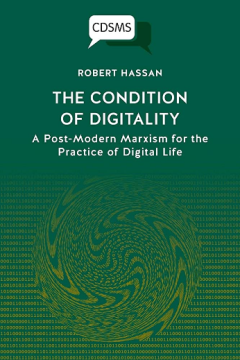
E-book The Condition of Digitality
- Edisi
- -
- ISBN/ISSN
- 9781912656677
- Deskripsi Fisik
- 212 hlm
- Judul Seri
- A Post-Modern Marxism for the Practice of Digital Life
- No. Panggil
- 001.1 HAS t
- Edisi
- -
- ISBN/ISSN
- 9781912656677
- Deskripsi Fisik
- 212 hlm
- Judul Seri
- A Post-Modern Marxism for the Practice of Digital Life
- No. Panggil
- 001.1 HAS t
E-book Media Use in Digital Everyday Life
Can you remember your first smartphone, and did it change your life? I bought my first smartphone in the early summer of 2011, right before the birth of my first child. I can safely say that life was never the same again. Although the new phone was hardly the most significant change that happened, it became part of how I reconfigured everyday life. My coincidental timing of these events m…
- Edisi
- -
- ISBN/ISSN
- 9781802623833
- Deskripsi Fisik
- 111 hlm
- Judul Seri
- -
- No. Panggil
- 004.678 YTR m
E-book Paradoxes of Digital Disengagement : In Search of the Opt-Out Button
Today, digital communication technologies are increasingly embraced by industries, governments and everyday users. As both people and public ser-vices are imagined as digital or networked ‘by default’ (Fotopoulou 2016; Mejias 2013; GOV.UK 2013, 2017), engagement – whether civic, consumer-ist or otherwise – is now predominantly understood as digital.…
- Edisi
- -
- ISBN/ISSN
- 9781914386336
- Deskripsi Fisik
- 183 hlm
- Judul Seri
- -
- No. Panggil
- 003.5 KUN p
E-book Digital Peripheries : The Online Circulation of Audiovisual Content fr…
The global reach of online platforms and services as well as the globally synchro-nized flows of audiovisual content might suggest that the global media market is nowfully integrated. This book argues contrariwise that the global digital market is farfrom united and that national borders, center-periphery hierarchies and differences inscale still matter, and perhaps they matter even more than i…
- Edisi
- -
- ISBN/ISSN
- 9783030448509
- Deskripsi Fisik
- 303 hlm
- Judul Seri
- -
- No. Panggil
- 346.048 SZC d
E-book Bridging the Digital Gender Divide : Include, Upskill, Innovate
Digital transformation – the effects on economies and societies of digitisation and the use of interconnected digital technologies and data – is offering new opportunities across the world, and holds promises for enhanced productivity growth and improved well-being of all citizens. However, a significant gender gap in the access, use and ownership of digital technologies is still present in…
- Edisi
- -
- ISBN/ISSN
- -
- Deskripsi Fisik
- 151 hlm
- Judul Seri
- -
- No. Panggil
- 305.3 OEC b

Digital circuits and systems
This world of digital electronics has undergone several major changes in the last two years. One of the most important changes has been in the tools and techniques we use to design, prototype, test and debug digital systems. We tested and debugged digital circuits with a simple oscilloscope, logic probe and voltmeter.
- Edisi
- -
- ISBN/ISSN
- 0071002170
- Deskripsi Fisik
- vi + 547 hal; 21 x 29 cm
- Judul Seri
- -
- No. Panggil
- 621.381 HAL d

Digital computer electronics
Textbooks on microprocessors are sometimes hard to understand. This text attempts to present the various aspects of microprocessors in ways that are are understandable and interesting.
- Edisi
- 3rd ed
- ISBN/ISSN
- 0028005945
- Deskripsi Fisik
- vi + 519 hal; 21 x 27 cm
- Judul Seri
- -
- No. Panggil
- 621.39 MAL d

Digital engineering design : A modern approach
Digital engineering design involves both design and analysis of digital devices and systems, design and analysis cannot usually be consideered seperately. Also, the correct engineering design of a digital system can result only if the designer makes the proper choice of parts to be assembled. However, to do this the designer must have a complete understanding of the operation of each part and m…
- Edisi
- -
- ISBN/ISSN
- 0132117800
- Deskripsi Fisik
- xiv + 659 hal; 21 x 26 cm
- Judul Seri
- -
- No. Panggil
- 621.9 TIN d

Servo Motor and Motion Control using Digital Signal Processors
Servo motor and motion control technologies are based on mechatronics engineering. Due to recet, remarkable progress in power electronics and microelectronics, more advanced servo motor and motion control is now available. This book mainly describes the practical realization of servo motor and motion control using the TMS 320C25 for practicing engineers who wish to obtain high productivity on …
- Edisi
- -
- ISBN/ISSN
- 0138070253
- Deskripsi Fisik
- xv; 275 hal; 24.5 x 18 cm
- Judul Seri
- -
- No. Panggil
- 629.8 DOT s
 Karya Umum
Karya Umum  Filsafat
Filsafat  Agama
Agama  Ilmu-ilmu Sosial
Ilmu-ilmu Sosial  Bahasa
Bahasa  Ilmu-ilmu Murni
Ilmu-ilmu Murni  Ilmu-ilmu Terapan
Ilmu-ilmu Terapan  Kesenian, Hiburan, dan Olahraga
Kesenian, Hiburan, dan Olahraga  Kesusastraan
Kesusastraan  Geografi dan Sejarah
Geografi dan Sejarah